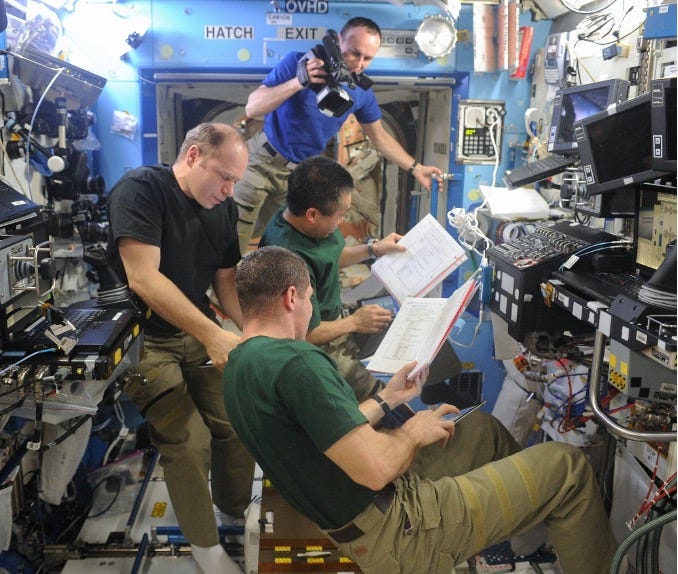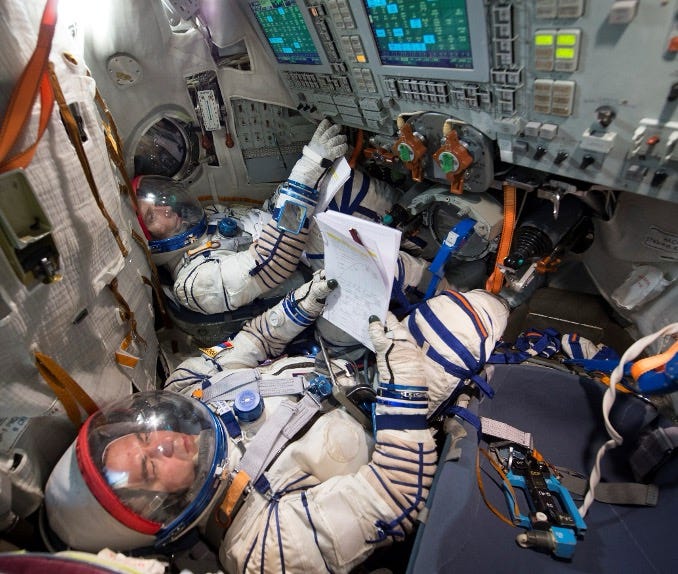Optimising Human Performance in Space: From Theory to Practice
Part 3: Practical Applications and Future Directions

This three-part series examines how humans process information in space environments and explores the implications for mission success, system design, and future space exploration.
You are currently reading Part 3.
If you missed Part 1 or 2 , look for:
Part 1: Understanding Human Information Processing in Space Operations
Part 2: Cognitive Workload: The Critical Balance in Space Operations
Part 3: Practical Applications and Future Directions
How do we apply our understanding of human cognition to improve space operations?
This final part examines practical applications, from system design to training protocols.

When do we need to think about cognitive workload?
It is important to evaluate and reduce workload in the development cycle of space systems and operations when tasks are:
- Highly procedural,
- Repetitive,
- Completed by multiple crew members,
- using complex systems or,
- Simultaneous.
And we need to think about both short duration and long duration measurement. As in, how cognitive workload changes with duration.
We’re looking to reduce excessive workload wherever we can, to reduce errors and potential failures, and to maximise capacity for unexpected tasks.
To avoid imposing excessive workloads we use workload prediction by task analysis before a system is fielded; and assessment of workload after an operator e.g. an astronaut, uses a completed system or system component.
Assessment and prediction are complementary approaches to workload measurement, each with their own benefits and shortcomings. Assessment tends to be more accurate than prediction but can only be carried out after the design is completed. Prediction can be done early in the design cycle, but no fully valid predictive models of workload exist.
What can we do if workload is found to be high?
If workload is found to be excessive, designers can:
- Change equipment and design,
- alter task requirements,
- automate some functions,
- or provide extensive training. (The least desirable approach).
How might we carry out any of these changes:
Changing equipment and system design
This could include:
- Ergonomic Interfaces: Designing controls and displays that minimise cognitive load.
- Intuitive Controls: Creating systems that align with operators' mental models.
- Cognitive Offloading: Incorporating smart design elements that reduce mental burden.
Preferably with a Human Factors expert to consult on the redesign!
Altering task requirements
Consider:
- Task Sharing and Rotation: Distributing cognitive demands among crew members.
- Structured Breaks: Designing tasks with natural pauses for cognitive recovery.
Automating functions
While automation can reduce workload during normal operations, its setup or failure can impose additional workload on operators, and low situation awareness can lead to delayed or erroneous actions in response to unexpected circumstances.
Finding a balance between workload and situation awareness by:
- periodically turning off automation to update situation awareness,
- designing reliable alerts and alarms to reduce visual monitoring workload while avoiding misses and false alarms.
Provide Training
With practice, workload on a task decreases, allowing for better multitasking abilities. The training curve follows an exponential function, and overtraining is recommended for tasks that may need to be carried out in high workload environments.
As people become more proficient in multitasking environments, they acquire time-sharing and task management skills, which involve knowing when to focus on one task and ignore or postpone another.
Some enhanced training protocols include
- Simulation-Based Training: Immersive experiences for high-stress scenarios.
- Virtual Reality Applications: Creating realistic, low-risk environments for practicing complex procedures.
- Overlearning: Extensive practice beyond initial mastery to ensure performance under stress.
- Metacognitive Skill Development: Training in self-awareness and task management strategies.
- Periodic Refresher Courses: Maintaining proficiency in critical skills and procedures.

Conclusion
The integration of cognitive science into space operations continues to evolve, becoming increasingly critical as missions become longer and more complex. By applying these principles to system design, training programmes, and operational procedures, we can significantly enhance human performance in space.
Moreover, the lessons learned from space applications offer valuable insights for improving human performance in various high-stakes terrestrial operations, from air traffic control to emergency response. As we continue to push the boundaries of human exploration, our understanding of cognitive workload management will play a pivotal role in ensuring the success and safety of future missions.
Question for you: How else could we reduce cognitive workload in space or terrestrial environments? What have I missed? Let me know in the comments.
This concludes our 3-part series on Human Information Processing in Space Operations. The principles and practices discussed provide a framework for understanding and optimising human performance in space and other complex operational environments.




